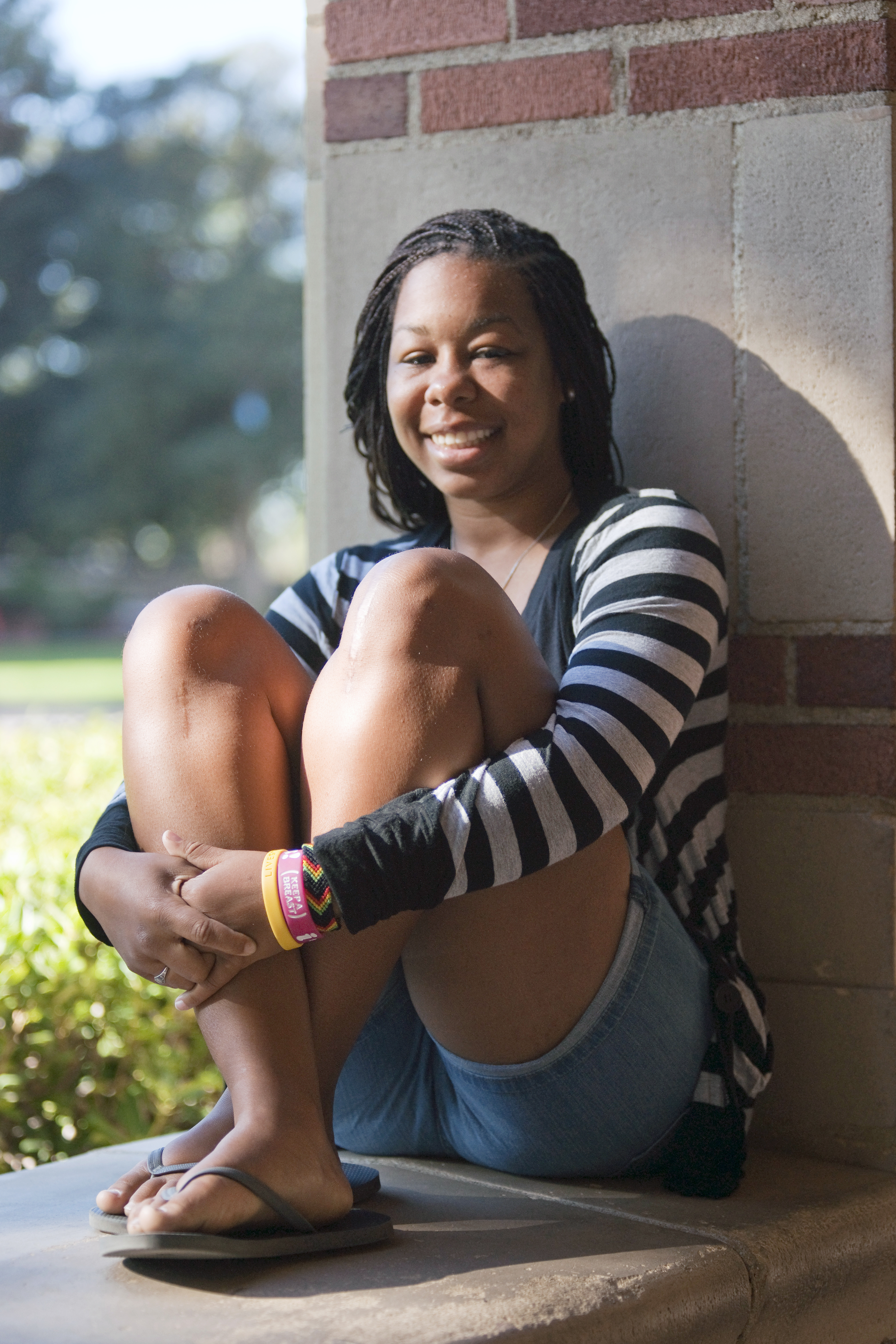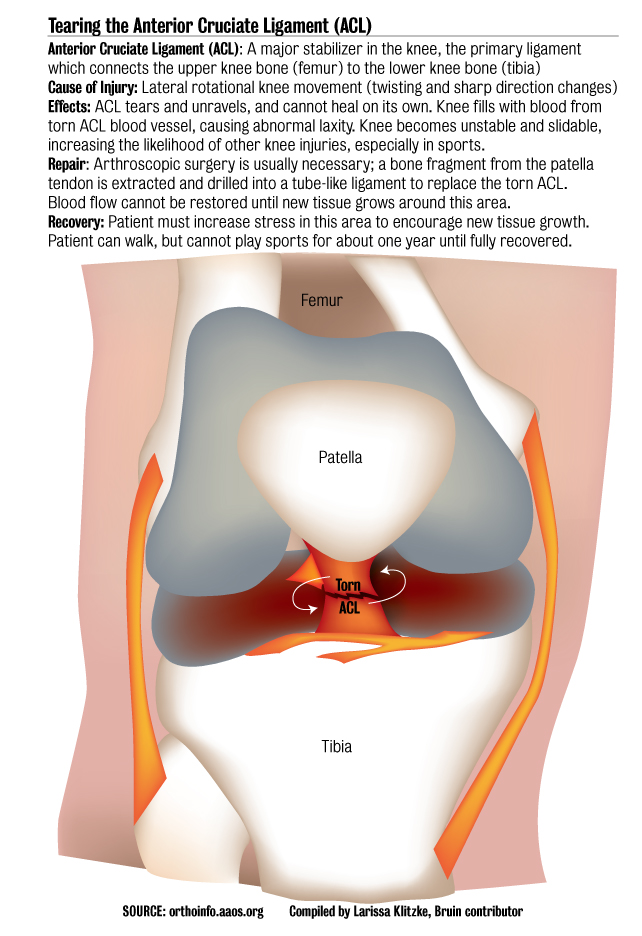
Lauren Carr, a third-year physiological science student and member of UCLA’s club soccer team, tore her anterior cruciate ligament in the first game of the season.
Lauren Carr, a member of UCLA’s club soccer team, was playing in her first game of the season when she felt her left knee pop.
That pop, as it turned out, was a torn anterior cruciate ligament ““ an injury that can bench an athlete for more than a year, said Dr. Gerald Finerman, a professor of orthopedic surgery at UCLA and director of intercollegiate sports medicine.
NCAA statistics of injuries for the past several years suggest women athletes are much more likely to tear their ACLs than are male athletes, said Dr. Sharon Hame, an associate clinical professor of orthopedic surgery at UCLA.
The ACL is an important ligament in the knee that keeps the bones above and below the knee more in sync, Finerman said. He added that this ligament also helps to stabilize the knee and protects other structures around the joint. Once this ligament is torn, a person has abnormal looseness in the knee, Finerman said.
There are multiple factors that explain why women are more prone to ACL injuries, Hame said. One factor could be anatomical, since women have smaller ligaments and bones, making them more susceptible to this type of injury.
Other reasons could be that hormonal changes during menstruation may alter the way women react in times of physical activity, she said.
It could also be because of the way women naturally jump.
“Doctors have found that women jump differently than men. If females come down from a jump, such as a layup in basketball, they do it with less knee flexion,” Hame said. “Men flex their knees a lot more, and that seems to protect the ACL.”
Carr, a third-year physiological science student, tore the ACL in her right knee three years ago while she was still in high school. Determined to play soccer during her senior year, Carr went through intense rehabilitation that negatively affected her condition.
“I pushed so hard to come back that for every two steps of progress I made, I fell back four steps,” she said.
Eventually, with time and proper conditioning, she was able to play the sport she loved without fear of greater injury to her right knee. But while conditioning her right knee, Carr unknowingly gave less attention to her left knee. As a result, Carr’s left knee also gave in.
Surgery is required to create a new functioning ACL. Bone fragments from ligament surrounding the knee are extracted and used as a replacement for the torn ACL, Finerman said. The process can take more than a year to heal because new tissue with blood supply must be made in the new ligament.
“A major injury to the knee can really have long term effects, even when you reconstruct it, sometimes there’s damage you cannot correct,” Hame said.
There are also prevention programs for athletes, specifically women, to decrease the likelihood of tearing an ACL, Hame said. Participants are taught to flex when jumping and to jump with legs aligned parallel to each other to prevent pivoting, which is another way athletes commonly tear their ACL.
In Carr’s case, she exercises daily but decided not to play soccer this year. She said her knees get sore after normal exercise, and stretches and warm-ups take longer than usual now because she is trying to prevent other knee injuries.
But Carr has not given up hope.
“Although I had these injuries, soccer has always been a part of my life, and it’s something I wish to continue doing next year,” she said.
